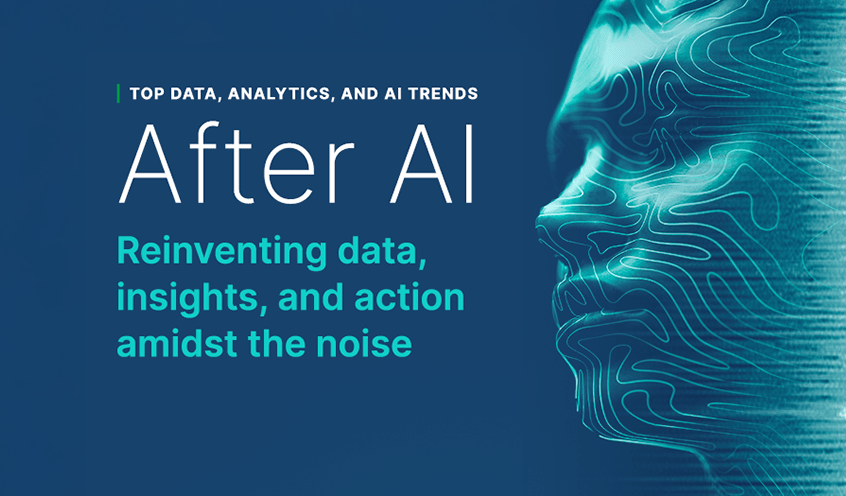In my first post of this new blog series, I introduced the concept of “sliding doors” for creating value with data: the divergent paths that organizations can take which can lead to great - or not so great - outcomes.
In this post, I want to explore this for what has become a new data imperative for organizations today: effectively reporting their environmental, social and governance (ESG) data to meet new regulations.
Today these regulations are being phased in for Europe and have also been released or will be released soon in other countries. And as we have seen before with GDPR, local regulations have global implications if you are doing business in a country or region where compliance is required. It’s been previously estimated that more than 50,000 EU-based companies and approximately 10,400 non-EU enterprises will be subject to Europe’s Corporate Sustainability Reporting Directive (CSRD).
If your company is one of these 60,000+ organizations, this may or may not be a surprise to you: ESG has a major data problem. To correctly report ESG data and avoid risks of “greenwashing”, all the right data must be collected, integrated and analyzed properly, and the data must be right and trusted. But with ESG data being predominantly unstructured and stored in many different formats and disparate locations, this is a huge undertaking. According to a recent study, top challenges identified by organizations are lack of data quality and reliability (42%), and too many different data sources (36%).
Unfortunately, a lot of organizations are not necessarily grabbing the door to the preferred path to solve this…
Wrong Door
In a new global study, KMPG found that almost half of organizations are using spreadsheets to manage their ESG data. This is not necessarily surprising since spreadsheets can be a convenient and easily accessible tool for basic data management tasks. But we have seen this movie before, haven’t we? It works great at first but quickly goes through growing pains. And when it comes to ESG, considering the nature of that data and the multiple siloed systems where it resides, that approach is particularly ill-suited. Let me count the ways…
Spreadsheets have limitations in handling large volumes of data. They are susceptible to compromise data integrity due to errors and version control problems. They lack advanced analytical capabilities and often require manual manipulation to derive meaningful insights. They also lack robust collaboration features, hindering effective communication and teamwork. They are vulnerable to data breaches and unauthorized access, which is especially problematic for ESG data which often contains sensitive information. They are also not designed to adequately manage auditing and compliance complexities, making it more difficult to demonstrate compliance with reporting standards.
In sum, that path is paved with data silos, lack of governance and control, and inefficient and time-consuming processes. And of course, if the data fed to these spreadsheets is not properly collected, integrated and governed to begin with, the problem is only compounded.
The United Nations, a long-time partner of Qlik, once learned this the hard way while attempting to measure their air travel carbon footprint. Their sustainability department was downloading SAP extracts and leveraging their carbon emissions calculator (ICAO) to measure it all in Excel – a manual process that took 20 people and 6 months. At the same time, their travel department was also pulling data from SAP and was using it for a Qlik dashboard to help manage air travel expenses. The two departments operated in silo from each other…
Right Door
Fortunately, the UN righted that path - so there is a happy ending to that story. Their SAP data is now connected to the ICAO calculator, and automatically pulled into Qlik analytics for the sustainability team to measure carbon footprint fast and efficiently. And perhaps the best part: with access to carbon footprint information, the travel team can now also act on the data, and book more sustainable travel to help reduce their environmental impact and meet their Sustainable Development Goals. It’s a great story of automation, insights, and action for good.

Ultimately, to successfully manage and report ESG data, you first need to build the right data foundation by effectively collecting, integrating, and delivering trusted data into your target environment, whether it’s on-premise or in the cloud, or a combination of both. Once you have done that, you should leverage AI-powered analytics to take that trusted data and turn it into insights and action - generating visualizations and predictions and providing interactive and fast answers to benefit not just your reporting efforts, but your business overall.
The good news: if you are a Qlik customer, you are already on the right path to meet your data challenges, without having to invest in separate, stand-alone ESG software.
Let me end with my favorite thing about this path: it provides a fantastic upside above and beyond fulfilling ESG reporting requirements. As recently confirmed by new market analysis, good ESG data management ultimately benefits your business.
If you would like to learn more about how to leverage Qlik solutions to integrate ESG into your entire business, please talk to your Qlik representative, or contact us at sustainability@qlik.com. We also plan to showcase our sustainability initiatives and solutions at Qlik Connect on June 3-5 in Orlando and hope to see you there!
In this article:
Executive Insights and Trends













































